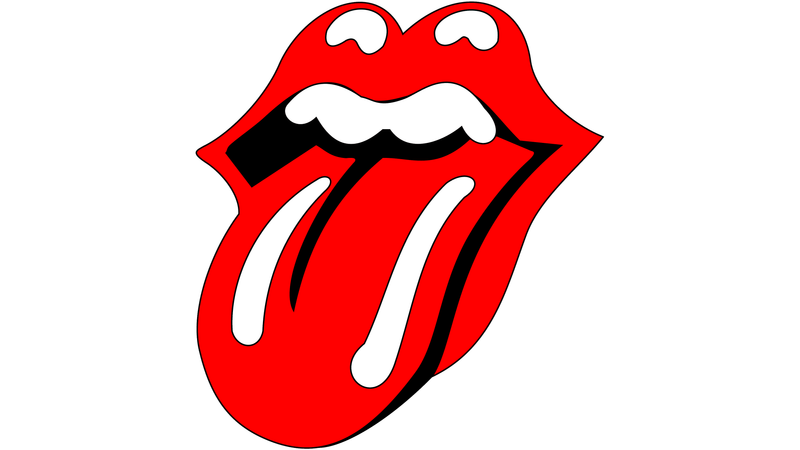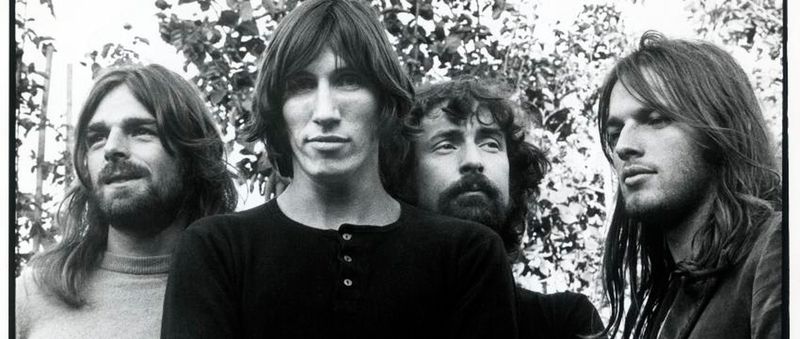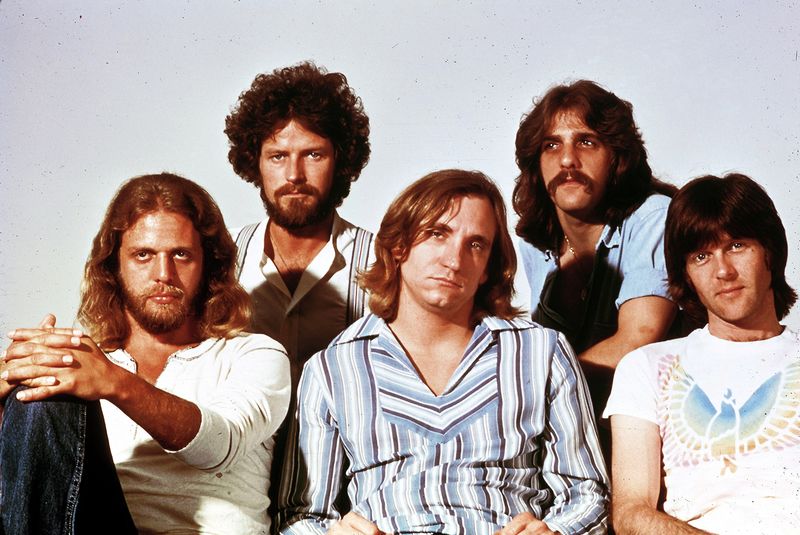15 Question Challenge That Will Determine If You Are A Classic Rock Expert

Get ready to rock with our 15-question classic rock challenge! Whether you’re a lifelong fan or just love a good guitar riff, this quiz will put your knowledge to the test.
From legendary bands like The Beatles, Led Zeppelin, and The Rolling Stones to unforgettable lyrics and epic album covers, each question celebrates the golden age of rock and roll.
Dive into the stories behind iconic songs, test your memory on legendary performances, and relive the era that defined music history. So crank up the volume, grab your air guitar, and see if you have what it takes to call yourself a true classic rock expert.
Are you ready to prove your rock and roll prowess? Let’s go!
1. Who sang “Stairway to Heaven”?

The hauntingly beautiful “Stairway to Heaven” is a masterpiece by Led Zeppelin, a band that epitomizes the essence of classic rock.
Released in 1971, this song quickly became a defining anthem, capturing the imagination of listeners with its ethereal lyrics and intricate musical composition. Robert Plant’s mesmerizing voice, paired with Jimmy Page’s legendary guitar work, creates an unforgettable soundscape.
Whether you’re a seasoned fan or a newcomer, deciphering the song’s mysterious meaning can be a rewarding experience. Is it about a spiritual journey, or a commentary on materialism? The debate continues, but one thing’s for sure: “Stairway to Heaven” remains an iconic track that transcends generations and musical boundaries.
2. What is the “Hotel California” about?
“Hotel California” by The Eagles is a song wrapped in enigma and allure, featuring a melody that’s as haunting as its lyrics.
Released in 1976, it paints a vivid picture of a luxurious hotel that seems impossible to leave, a metaphor for the hedonistic lifestyle of the time. Don Henley’s soulful voice guides listeners through this mysterious tale, leaving much to interpretation.
Is it a critique of the music industry or a reflection on the excesses of fame? The lyrics invite endless analysis and discussion, adding to its timeless appeal. From the mesmerizing guitar solos to the evocative storytelling, “Hotel California” continues to captivate and intrigue classic rock fans around the world.
3. Which band was known as the “Fab Four”?

The “Fab Four” refers to The Beatles, a band that redefined the music landscape in the 1960s.
Comprising John Lennon, Paul McCartney, George Harrison, and Ringo Starr, this British quartet captivated the world with their innovative sound and charismatic presence. Their influence extended beyond music, sparking a cultural revolution known as “Beatlemania.”
From catchy pop tunes to experimental compositions, The Beatles’ discography is a testament to their artistic evolution. Songs like “Hey Jude” and “Let It Be” remain timeless classics that resonate with fans across generations.
Whether you’re a die-hard fan or just tapping your feet to their hits, The Beatles’ legacy is undeniably woven into the fabric of classic rock history.
4. What was Queen’s famous stadium anthem?

Queen’s legendary stadium anthem, “We Will Rock You,” is a song that needs no introduction.
Released in 1977, it quickly became a global sensation, with its irresistible stomp-stomp-clap beat and Freddie Mercury’s powerful vocals. The song’s simplicity is its strength, rallying fans to unite and sing along at concerts and sporting events.
Paired with “We Are the Champions,” this iconic track continues to resonate with audiences, celebrating victory and camaraderie. Whether echoing through stadiums or playing on your headphones, “We Will Rock You” remains a triumphant anthem that embodies the spirit of classic rock, inviting fans to join in a universal chorus of rock ‘n’ roll unity.
5. Who is known as the “Godfather of Heavy Metal”?

Ozzy Osbourne, often hailed as the “Godfather of Heavy Metal,” is a name synonymous with the genre’s dark and rebellious spirit.
As the lead vocalist of Black Sabbath, Osbourne played a pivotal role in shaping the sound of heavy metal during the 1970s. His distinctive voice and theatrical stage presence set the tone for countless bands that followed.
From “Paranoid” to “Iron Man,” Black Sabbath’s tracks are cornerstones of classic rock. Osbourne’s solo career further cemented his legacy, with hits like “Crazy Train” showcasing his enduring influence. Whether you embrace the darkness or simply appreciate the artistry, Ozzy Osbourne’s contributions to classic rock remain unparalleled and iconic.
6. Which guitarist is known for playing with his teeth?

The legendary guitarist Jimi Hendrix mesmerized audiences with his revolutionary style, famously playing the guitar with his teeth. A true innovator, Hendrix’s performances were electrifying spectacles that pushed musical boundaries.
His appearance at Woodstock in 1969 remains one of the most iconic moments in rock history, showcasing his unparalleled talent and showmanship.
Tracks like “Purple Haze” and “All Along the Watchtower” continue to influence guitarists today. Hendrix’s unique ability to blend blues, rock, and psychedelia into a cohesive sound made him a standout figure in classic rock. His untimely passing in 1970 left a void, but his legacy endures, inspiring generations of musicians.
7. Who performed “Bohemian Rhapsody”?

“Bohemian Rhapsody,” performed by Queen, is a rock opera that defies convention and captivates listeners with its theatrical flair.
Released in 1975, this multi-part masterpiece combines ballad, opera, and hard rock, showcasing the band’s innovative spirit. Freddie Mercury’s dynamic vocals lead the charge, supported by Brian May’s intricate guitar work and Roger Taylor’s powerful drumming.
The song’s enigmatic lyrics and bold structure invite endless interpretation and admiration. From headbanging moments to operatic crescendos, “Bohemian Rhapsody” remains a quintessential anthem in classic rock, celebrated by fans worldwide. Whether you’re belting it out in the car or marveling at its complexity, this iconic track is a testament to Queen’s artistic genius.
8. Which band is associated with the “tongue and lips” logo?

The “tongue and lips” logo is synonymous with The Rolling Stones, one of the most enduring and influential bands in rock history. Formed in 1962, the band has become a symbol of rebellion and musical innovation, led by the charismatic Mick Jagger and the legendary guitarist Keith Richards.
The logo itself, designed by John Pasche in 1970, captures the band’s bold and unapologetic style. Hits like “Paint It Black” and “Satisfaction” continue to resonate with fans, proving that The Rolling Stones’ appeal transcends generations.
Whether you’re swaying to their bluesy rhythms or rocking out to their energetic anthems, this iconic band remains a cornerstone of classic rock culture.
9. What album is “Dark Side of the Moon” from?

“Dark Side of the Moon” is an iconic album by Pink Floyd, released in 1973. Often hailed as one of the greatest albums of all time, it explores themes of conflict, greed, and the passage of time. The album’s cover, featuring a prism refracting light, has become a symbol of the band’s innovative approach to music and art.
Tracks like “Time” and “Money” showcase Pink Floyd’s ability to blend progressive rock with deep philosophical lyrics. The album’s seamless transitions and atmospheric soundscapes continue to captivate listeners.
Whether you’re pondering its profound themes or simply enjoying the sonic experience, “Dark Side of the Moon” remains a masterpiece that defines the essence of classic rock.
10. Who famously sang “Born to Run”?

Bruce Springsteen, affectionately known as “The Boss,” is the iconic voice behind “Born to Run.” Released in 1975, this anthem captures the restless spirit of youthful dreams and the pursuit of freedom. Springsteen’s heartfelt lyrics and energetic delivery resonate with listeners, making it a timeless classic in rock history.
The song’s driving rhythm and evocative storytelling paint a vivid picture of American life, with themes of hope and escape. Whether you’re hitting the open road or reflecting on life’s journey, “Born to Run” remains a powerful anthem that continues to inspire fans.
Springsteen’s legacy as a rock legend endures, with “Born to Run” as a defining moment in his illustrious career.
11. Which band released “Smoke on the Water”?

Deep Purple, a pioneering force in hard rock, released the iconic track “Smoke on the Water” in 1972.
Known for its unforgettable guitar riff, the song narrates the true story of a fire during a Frank Zappa concert in Montreux, Switzerland. Ritchie Blackmore’s powerful guitar work and Ian Gillan’s commanding vocals make this track a staple in classic rock repertoire.
“Smoke on the Water” captures the raw energy and creativity that define Deep Purple’s music. Whether you’re a budding guitarist learning the riff or a seasoned fan, this track’s legendary status endures. As an anthem of resilience and rock ‘n’ roll spirit, “Smoke on the Water” continues to ignite audiences worldwide.
12. Who is the “Piano Man”?

Billy Joel, affectionately known as the “Piano Man,” is celebrated for his storytelling prowess and musical versatility.
The song “Piano Man,” released in 1973, is a semi-autobiographical tale that paints a vivid picture of life in a bar. Joel’s melodic piano playing and harmonica create a nostalgic ambiance, resonating with listeners across generations.
The characters in the song, from the waitress to the businessman, reflect the diverse tapestry of life and dreams. Whether you’re tapping your feet to the rhythm or reflecting on the lyrics, “Piano Man” remains a timeless classic that continues to captivate audiences. Joel’s artistry as a musician and storyteller shines brightly in this enduring anthem.
13. What was David Bowie’s alter ego?

David Bowie’s alter ego, Ziggy Stardust, is a legendary figure in the world of rock music.
Emerging in the early 1970s, Ziggy represented a bold and theatrical persona that captivated audiences with its androgynous style and cosmic themes. Bowie’s innovative approach to music and performance pushed artistic boundaries, influencing countless musicians and artists.
The album “The Rise and Fall of Ziggy Stardust and the Spiders from Mars” showcases Bowie’s creative genius, blending glam rock with visionary storytelling. With hits like “Starman” and “Suffragette City,” Ziggy Stardust remains an iconic symbol of individuality and artistic expression.
Bowie’s legacy as a trailblazer continues to inspire, making him a timeless icon in classic rock history.
14. Who sang “Sweet Child o’ Mine”?

“Sweet Child o’ Mine,” a quintessential rock anthem, was brought to life by Guns N’ Roses.
Released in 1987, this track features one of the most recognizable guitar riffs in rock history, crafted by the legendary Slash. Axl Rose’s emotive vocals add depth and passion, making it a standout hit from the album “Appetite for Destruction.”
The song’s lyrics, inspired by Axl’s then-girlfriend, capture the essence of love and nostalgia. Whether you’re headbanging to the rhythm or singing along to the chorus, “Sweet Child o’ Mine” remains a beloved classic. Its enduring appeal lies in its raw energy and heartfelt sentiment, solidifying its place in the pantheon of rock greatness.
15. Which artist is known for the “guitar windmill” move?

Pete Townshend, the legendary guitarist of The Who, is renowned for his iconic “guitar windmill” move.
A staple of his electrifying performances, this theatrical gesture involves swinging his arm in a windmill motion while strumming the guitar. Townshend’s energetic stage presence and innovative playing style have made him a defining figure in rock music.
The Who’s powerful anthems, such as “Baba O’Riley” and “My Generation,” showcase Townshend’s musical prowess and creativity.
Whether you’re witnessing the windmill in action or immersing yourself in The Who’s dynamic sound, Townshend’s influence on rock is undeniable. His contributions to classic rock continue to inspire, captivating audiences with each performance.

